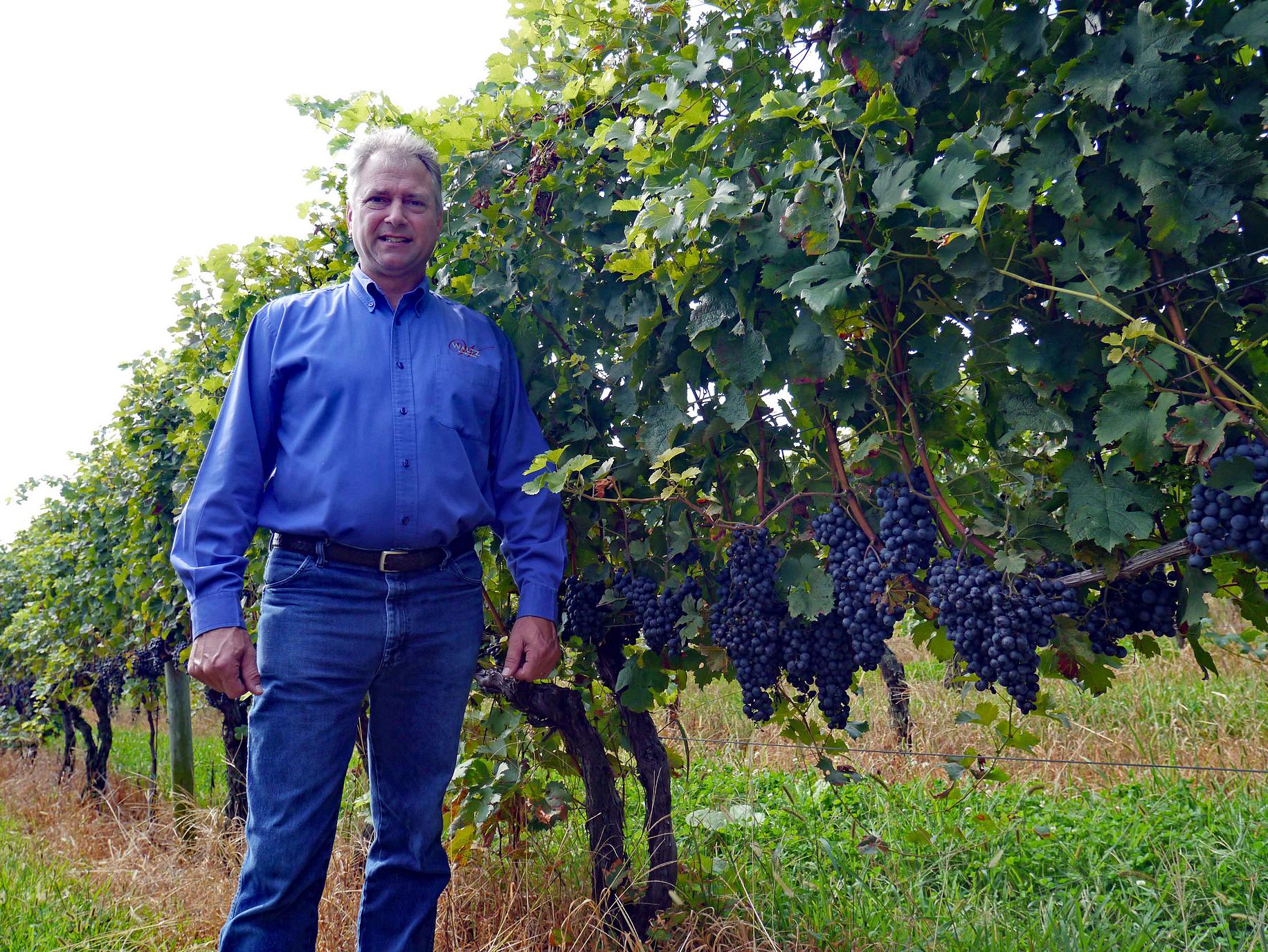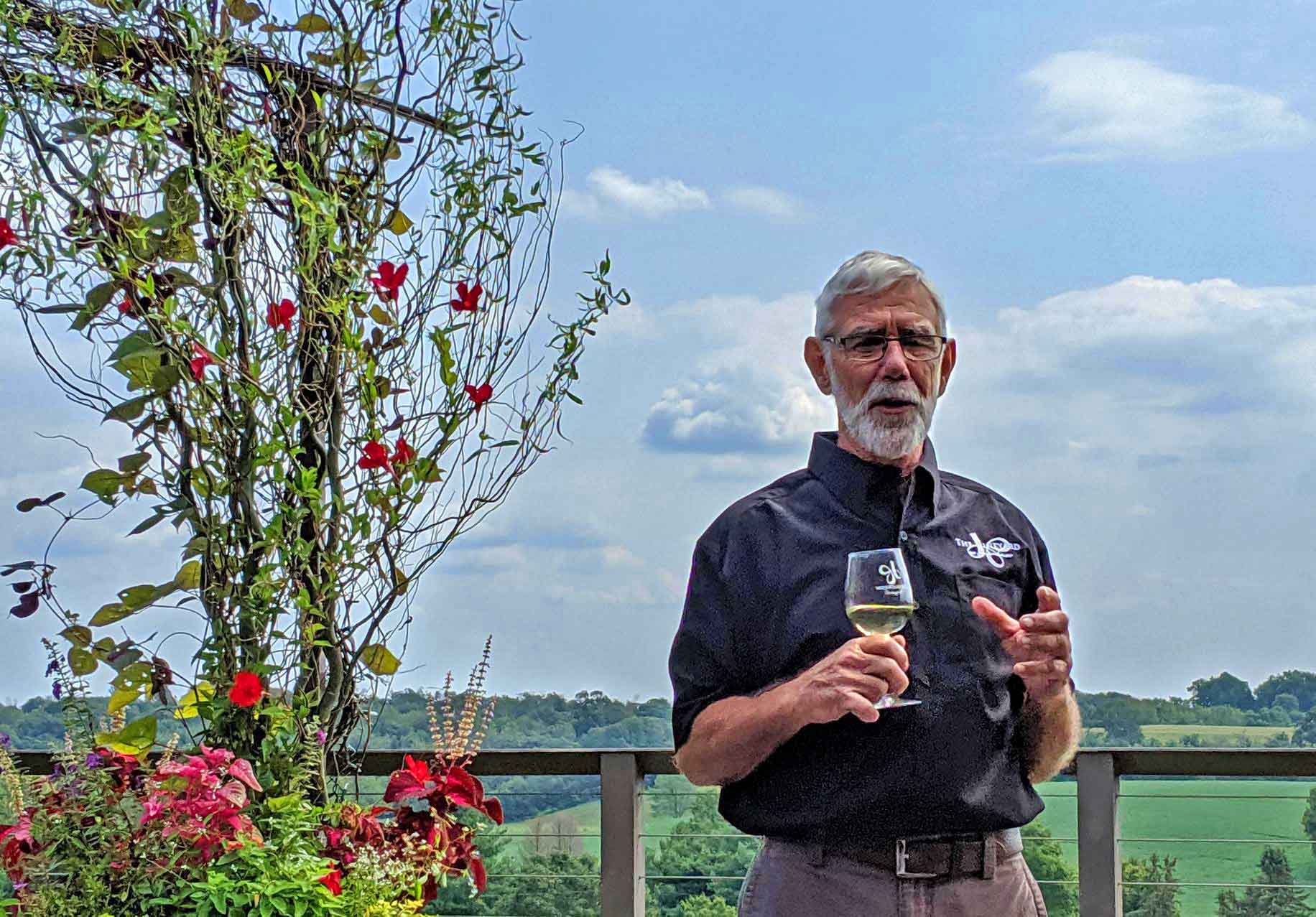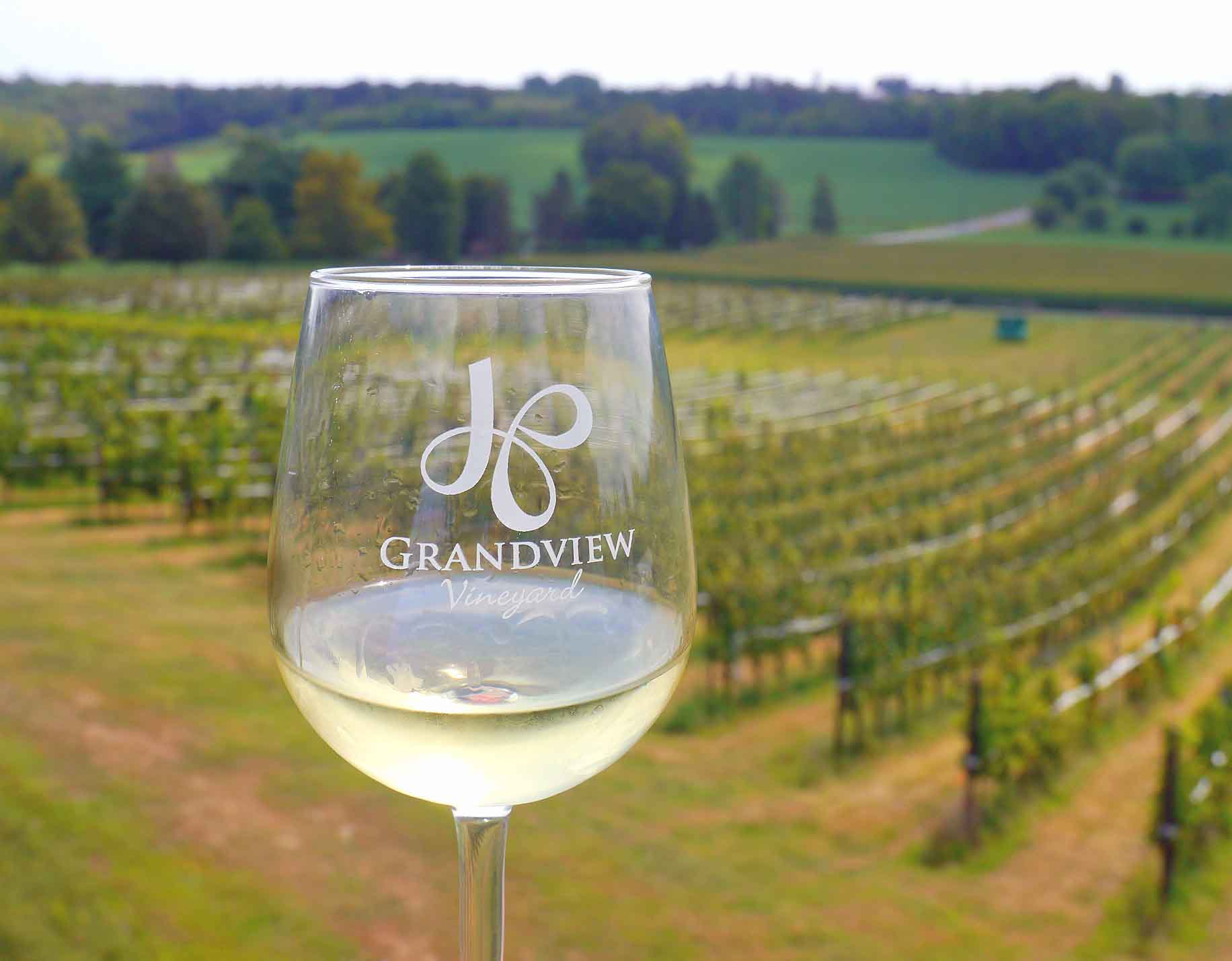While you’re as likely to get stuck behind a horse-drawn buggy as a tractor on Lancaster County’s rural roads, the region is more than straw-hat and gray-bonnet country these days. Historic dairy and row crop farming is giving way to vineyards and hop yards as farm wineries and craft breweries pop up in Pennsylvania Dutch country. Traditionally, this has been a region of fruit winemaking, followed at the end of the 20th century by a reliance on French-American hybrid grapes. Slowly but surely, wineries focused on traditional European wine grapes have begun to prove that Lancaster County is fertile soil indeed for well-made classic wines. In the quest to look at the future of Pennsylvania winemaking, I was able to visit a pair of very different but excellent operations less than 10 miles apart.
Waltz dances gracefully to Bordelais tune
Sixth-generation farmer Jan Waltz (at top) and his wife Kimberly (above) aren’t content to make simply good Pennsylvania wines. They strive to make wines that are, in Kim’s term, “globally competitive.” That’s a tall order, since Waltz focuses on Bordeaux varietals.
“Merlot is close to a bulletproof variety for us,” Jan says. The grapes were among the first he planted when beginning the transition from tobacco, corn, soybeans, and wheat in 1997. For many years, he sold his fruit to up to 10 other wineries. He and Kim experimented with small home production for a few years for opening Waltz Vineyards Estate Winery (1599 Old Line Rd, Manheim, PA; 717-664-9463; waltzvineyards.com) in 2008. Since then they have supplemented Merlot and Cabernet Sauvignon with Chardonnay, Sauvignon Blanc, Semillon, Muscat Canelli, and Cabernet Franc. The couple has also enlisted the aid of Italian enologist Goffredo Agostini.
Waltz wines show winsome ways
 Although Waltz produces some sweeter wines that cater to local taste, three wines in a classic Bordeaux style chart the course for the winery’s long-term development. The Cherry Tree Merlot serves as the winery’s flagship. The current release, 2015 ($40), is surprisingly elegant for an American Merlot—powerful but restrained, like Jan Waltz’s firm but not crushing handshake. The palate ranges across dark fruits, with notes of plum, blackberry, and elderberry. Aging in French oak has firmed up the otherwise soft edges, making this a terrific food wine.
Although Waltz produces some sweeter wines that cater to local taste, three wines in a classic Bordeaux style chart the course for the winery’s long-term development. The Cherry Tree Merlot serves as the winery’s flagship. The current release, 2015 ($40), is surprisingly elegant for an American Merlot—powerful but restrained, like Jan Waltz’s firm but not crushing handshake. The palate ranges across dark fruits, with notes of plum, blackberry, and elderberry. Aging in French oak has firmed up the otherwise soft edges, making this a terrific food wine.
Reserve Chardonnay also spends time in French oak on the lees. More a classic cold climate chard, it has a full mouth feel with hints of pear and ripe apple on the palate. There’s also a curious caramel note to the 2016 ($38) I tasted, possibly an artifact of the barrel aging. More Bordeaux in its expression, Waltz’s Semillon vines are just beginning to produce enough for a varietal bottling. I tasted a 2017 ($34) that was sold principally to the winery’s club members. It’s an elegant take on the grape, with intense fruit and a characteristic waxy mouth feel. (The high glycerol in the varietal is what makes it ideal for Sauternes.)
Waltz also makes some Cabernet Sauvignon in small amounts, though the climate is challenging for the freeze-sensitive grape. I tasted a 2010 and a 2015 Crow Woods Cabernet. The older wine was still coming into its own with intense ripe black fruit. The 2015 remains quite closed. To the winery’s credit, they make good use of their cabs by producing a slightly off-dry Steigel Rosé ($20) with whole cluster Cabernet Sauvignon (75%) and Cabernet Franc (25%). The wine maintains a delicious acid level to balance the strawberry and melon fruits.
Grandview gives Bordeaux portfolio a Galician accent
Larry Kennel’s interest in winemaking was kindled by making dry fruit wines on a hobbyist scale. While Grandview Vineyard (1489 Grandview Road, Mount Joy, PA; 717-653-4825 grandviewwines.com) does still produce a few fruit wines, the bulk of its 2,500-case annual production focuses on Cabernet Sauvignon, Cabernet Franc, Merlot and Petit Verdot for the reds, and Chardonnay and Albariño for whites. With 5.5 acres in vines, Grandview is a family operation run by Larry and his wife Marilyn with daughters Sarah Haines and Fran Kratz as partners. The spectacular setting for Grandview makes it a popular wedding venue.
Albariño may seem the odd man out among the grapes, but it produces quite prolifically in this part of southeastern Pennsylvania. Grandview picks the grape with higher sugar and lower acid than is typical in Spain and Portugal, producing a less spicy wine with a strong fruitiness. The 2017 ($25) registers 12.3% ABV, somewhat higher in alcohol than its Iberian counterparts.
Like other wineries in the region, Grandview leans heavily on Cabernet Franc for its reds. I was impressed with the 2016 Cabernet Franc ($28), which had a nice roundness on the palate thanks to small amounts of the winery’s other Bordeaux grapes. When conditions are right (just twice since 2009), Grandview makes a Grande Rouge. The 2016 ($34) was very much a Right Bank blend dominated by 42% Merlot. A very pleasant ripe cherry nose gives way to an almost chewy black fruit palate and a lingering finish where the 32% Cabernet Sauvignon finally makes its presence known with a sensation of fresh violets.




